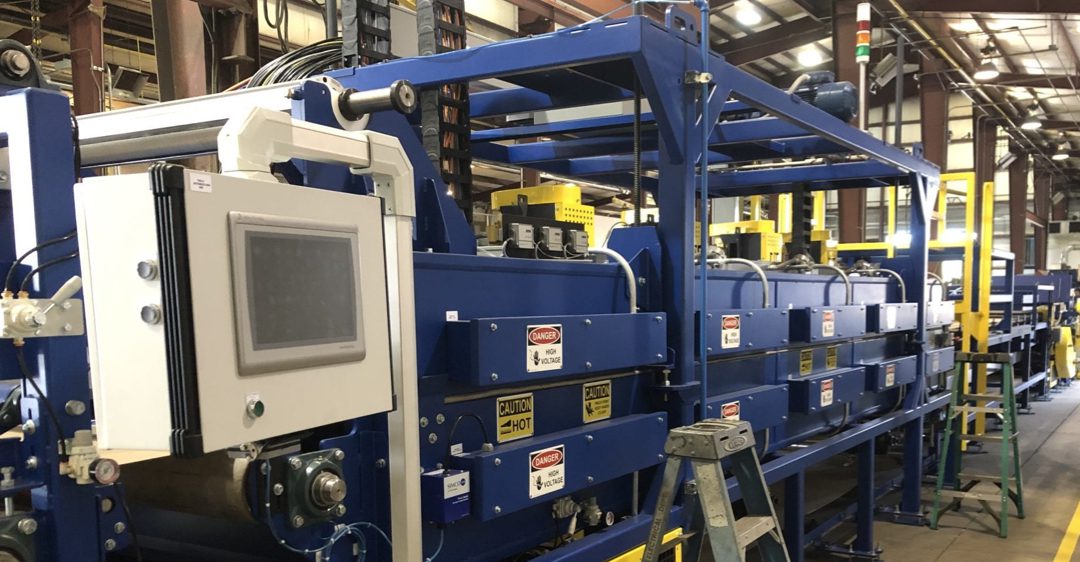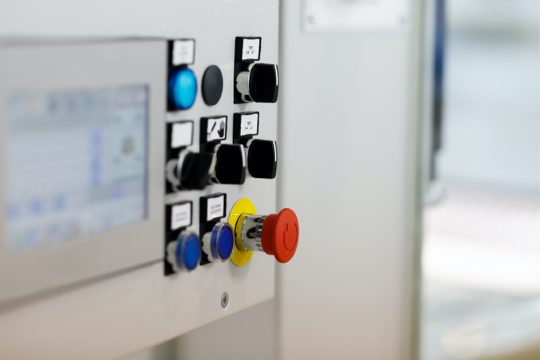Everywhere you look, manufacturers report the same problems: Open positions take longer to fill. Retaining top-caliber employees has become more difficult. Turnover rates are soaring as the so-called ‘Great Resignation’ runs its course.
For good or ill, the relationship between people and their jobs has changed. That change has introduced serious risks for manufacturers:
- Persistent understaffing causes costly production delays
- High turnover and low retention drives operational inefficiency
- Workforce chaos generally weakens morale
But one way to stay ahead of this slow-motion crisis is to redefine the relationship between humans and hardware.
This is an opportunity to consider investing in thermal processing equipment to stabilize operations and enhance resilience in the face of volatile labor conditions.

Modified or consolidated processes can counteract human labor volatility
Industrial ovens do most of the work in modern thermal processes. Human laborers fill in gaps.
Those gaps continue to narrow as firms try to:
- Control operational costs
- Eliminate sources of error
- Achieve more consistent quality
- Scale-up to boost profit
But today’s labor challenges fuel the argument that modifying or consolidating processes via equipment updates can also resolve a more basic challenge: It is no longer certain that manufacturers will have enough warm bodies on the floor to meet production goals.
Consider the circumstances you face in your operation:
- Would updated equipment allow you to reduce your staff size?
- Would it stabilize labor needs so you can pause or slow hiring?
- Could operational improvements brought by new equipment allow you to redirect human labor to other critical tasks?
- Could you drive potential operational cost savings into pay raises for better retention and easier recruitment?
One approach worth considering is integrating pre- and post-process handling equipment to your thermal processing operations. Read the four short case studies in this article and then consider how adopting a “whole system” approach can help address the workforce challenges you face.
Updated equipment can shorten operator learning curve
Turnover is a fact of life. People quit. People retire. People get promoted.
But replacing departed staff has gotten much, much harder throughout 2020 and 2021.
A compounding consideration is that companies continue paying the cost to hire well after someone’s first day: There’s always a learning period where a newbie learns how to use the equipment; in cases where processes are complex or equipment is complicated, training can take months.
New employees can’t learn their jobs alone, so someone more senior is usually enlisted to show them how it’s done. At best, you’re paying two people to do one person’s tasks. Factories cannot afford this for very long even in good times.
The faster you can turn new hires into revenue-earning operators, the better.
To flatten the learning curve, consider upgrading to equipment that’s easier to learn, easier to use and simpler to maintain. Of course, it’s easier said than done; a more intuitive, easier-to-use system requires more complex engineering up front, and that comes at a higher cost.
But the question manufacturers must ask themselves is: Is yesterday’s learning curve sustainable today?

Reduce risk with custom equipment
Industrial oven buyers often wrestle with whether they should choose a custom machine tailored to their exact process or a more standard option that they can “make work.”
The tradeoffs are familiar: Custom equipment is more expensive; standard options are less so. Custom equipment might be perfect for your process, but sometimes “good enough” is good enough.
We’re back to the premise from earlier: In manufacturing, human operators fill gaps.
And how often is the gap between “good enough” and “just right” bridged by the talents of your workforce? Do you have enough people on staff to keep that gap plugged? How long can an under-strength workforce strain beyond its capacity? How many open positions can you afford not to fill before your process breaks down?
Custom equipment is not for everyone. But in light of today’s persistently unsettled labor market, you’re at less risk when your success hinges on a static resource whose capacity and capabilities are known and unchanging.
In short, paying the price for the perfect industrial oven makes more sense for more types of buyers these days.
Can advanced equipment strengthen recruiting?
“Shortage” is the word everyone uses, but do we really not have enough people?
Today’s acute labor volatility has helped exacerbate an underlying chronic condition: Increasingly large shares of the emerging workforce view manufacturing as monotonous and unfulfilling. As this article points out, they feel this way partly because their parents and teachers told them as much.
It’s an unfortunate and unfair misunderstanding, but we feel it can be overcome. Investing in advanced equipment — and then showing it off — can be an effective strategy in reversing a phenomenon that’s persisted for at least two generations.
The result? A manufacturing workforce that looks a lot more like the society it exists within. A more diverse labor pool is healthier, more sustainable and more resistant to shocks.
In 2021 and beyond, it’s also a compelling competitive edge.
Let’s work through it together
One of the frustrations stemming from the pandemic has been coming to grips with its ripple effects. Labor, logistics and supply chain challenges will outlive the virus.
For how long? That’s anyone’s guess.
Manufacturers around the world are searching for stability and certainty. For some, it’s the key to their success. For others, it’s a matter of just surviving.
Consider an audit of your industrial ovens. If there are opportunities to upgrade your equipment and make your production more resilient, our engineers will find them.






